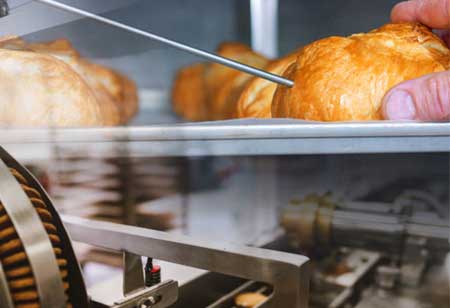THANK YOU FOR SUBSCRIBING
Be first to read the latest tech news, Industry Leader's Insights, and CIO interviews of medium and large enterprises exclusively from Food and Beverage Tech Review
Is Processed Food Unhealthy?

By
Food and Beverages Tech Review | Tuesday, January 25, 2022
Stay ahead of the industry with exclusive feature stories on the top companies, expert insights and the latest news delivered straight to your inbox. Subscribe today.
The spectrum of food processing goes from essential technologies such as freezing or milling to the addition of additives that boost shelf stability or enhance flavor.
FREMONT, CA: Generally, processed foods are seen as inferior to unprocessed ones. They may recall a packaged food product with several chemicals, including artificial colors, flavors, or other chemical additives. Often referred to as convenience or pre-prepared foods, processed foods are believed to contribute to the obesity pandemic and the increased incidence of chronic diseases such as diabetes and heart disease. However, depending on the source, the definition of processed food differs considerably.
The US Department of Agriculture (USDA) defines a processed food as any raw agricultural commodity that has been altered from its natural state through washing, cleaning, milling, chopping, heating, pasteurizing, blanching, cooking, canning, freezing, drying, dehydrating, mixing, packaging, or other procedures. Other components, such as preservatives, flavors, nutrients, and other food additives or substances permitted in food items, such as salt, sugars, and fats, may be added to the food.
In addition to storing, filtering, fermenting, extracting, concentrating, microwaving, and packaging, the Institute of Food Technologists, includes other processing words.
According to these criteria, almost all store items would be categorized as "processed." Because food begins to degrade and lose nutrients as soon as it is collected, even apples in the produce section undergo at least four processing procedures before being sold to consumers. In practice, it is helpful to distinguish between the various levels of food preparation.
There is little doubt that most households contain at least some processed goods. Some processed and fortified foods contain essential nutrients that a busy household or one with a limited food budget may not otherwise be able to receive. In terms of nutrition, processed and even ultra-processed foods contain essential nutrients. Some nutrients, like protein, are naturally maintained during processing, while others, such as B vitamins and iron, may be added back if lost. After harvest, fruits and vegetables that are rapidly frozen can keep the majority of vitamin C.
Throughout history, meals fortified with certain nutrients have protected specific populations from nutrient deficits and their associated health consequences. Examples include iron and B vitamins added to infant cereals to avoid anemia, vitamin D added to milk to prevent rickets, folic acid added to wheat flour to prevent birth abnormalities, and iodine added to salt to prevent goiter.
Certain processing methods, such as pasteurization, cooking, and drying, can eliminate or prevent the growth of dangerous microorganisms. The texture of foods is preserved by additives such as emulsifiers, preventing peanut butter from splitting into solid and liquid components. Other processing roles include delaying food spoilage, conserving food's attractive sensory properties (taste, texture, aroma, and appearance), and facilitating the preparation of a complete meal.
However, food processing also has disadvantages. Depending on the level of processing, numerous nutrients can be eliminated or damaged. When the outer layers of fruits, vegetables, and whole grains are peeled, phytochemicals and fiber may be lost. Some vitamins and minerals can be lost when foods are heated or dried. Although food makers can replace some of the lost nutrients, it is impossible to reproduce the original shape of the meal.
When determining whether or not to include a highly processed product in your diet, it may be beneficial to assess its nutritional value and long-term impact on health. A food with a disproportionately high ratio of calories to nutrients may be considered harmful. For instance, research suggests a link between a high intake of sugar-sweetened beverages and an increased risk of obesity, diabetes, and cardiovascular disease. However, certain processed foods containing beneficial nutrients, such as olive oil and rolled oats, have been associated with a decreased risk of several chronic diseases.
I agree We use cookies on this website to enhance your user experience. By clicking any link on this page you are giving your consent for us to set cookies. More info


However, if you would like to share the information in this article, you may use the link below:
https://www.fbtechrevieweurope.com/news/is-processed-food-unhealthy-nwid-1310.html





